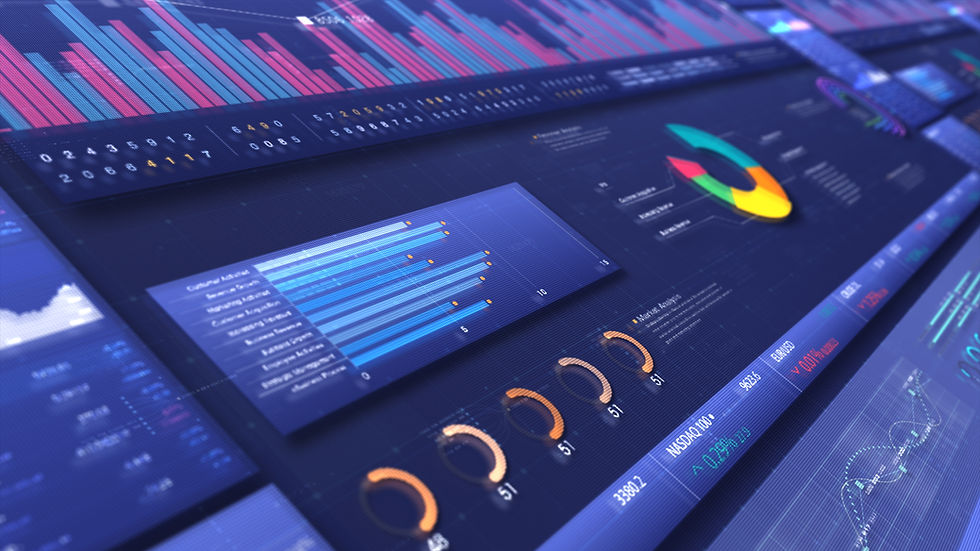Unleashing the Power of Data: How Visualization Transforms STEM Fields
- subudhirishika
- Nov 26, 2024
- 3 min read

In today’s world, data is generated at an astonishing rate. With more than 2.5 quintillion bytes created daily, effectively presenting that data is essential. This is especially true in STEM fields—science, technology, engineering, and mathematics—where understanding complex information can drive innovation. The ability to visualize data plays a key role in communicating results and informing decisions. In this post, we'll explore the impact of data visualization in STEM, its benefits, and effective tools to enhance your visual storytelling.
The Importance of Data Visualization in STEM
Data visualization is vital. It converts large datasets into visuals like graphs and charts, making complex information easy to understand. For example, a research study on air quality might generate thousands of data points over years. An interactive map can visualize pollutant levels over time, helping us quickly identify trends.
Visualizations also reveal insights that might be missed in raw data. A scatter plot showing the correlation between temperature and energy consumption can help engineers optimize energy use. With effectively presented data, understanding intricate concepts becomes accessible not only to experts but also to the general public.
Benefits of Data Visualization
Enhanced Understanding
Well-crafted visuals break down complex information. In fact, studies indicate that visuals can improve understanding by up to 400 percent.
Better Memory Retention
People remember images better than text. A compelling infographic can stick in someone’s mind longer than a lengthy report.
Emphasizing Key Insights
Visuals direct attention to significant points. For instance, a bar graph comparing success rates of different treatments can highlight the most effective option for patients.
Facilitating Real-time Analysis
Real-time data visualizations, like dashboards, let users manipulate data instantly. This is particularly useful in fields such as healthcare, where quick decisions can save lives.
Cross-disciplinary Communication
Data visualization bridges gaps across different STEM disciplines. A clear visual can communicate scientific findings to engineers or policymakers, fostering collaboration and innovation.
Tools and Techniques for Creating Impactful Visuals
Creating engaging visuals requires suitable tools and techniques. Here are a couple of the most popular options:
Software Tools
Tableau
This tool is intuitive and connects easily to various data sources. Businesses use Tableau extensively for creating interactive dashboards that allow in-depth data exploration.
Microsoft Power BI
Known for its robust analytics, Power BI integrates seamlessly with other Microsoft applications. With over 5 million users globally, it is widely used for creating reports that enhance data-driven decision-making.
Techniques
Choose the Right Type of Visualization
Match the chart type to your data. For instance, line graphs are perfect for displaying trends over time, while pie charts effectively show proportions.
Keep It Simple
Clutter can confuse viewers. Focus on key insights while removing unnecessary elements. A study found that simplifying visuals can increase viewer engagement by up to 60 percent.
Use Color Wisely
Colors can highlight important data points. Consistent color schemes help convey meaning, with red indicating negative trends and green signaling positive outcomes.
Add Context
Contextual elements like legends and titles guide viewers through your visuals, clarifying complex findings. This ensures that your message is clear and easily digestible.

Real-World Applications in STEM Fields
Environmental Study
In a climate change project, researchers used interactive visualizations to map deforestation rates across regions, revealing that Brazil lost approximately 7.5 million hectares of forest between 2010 and 2020. This insight propelled more focused conservation strategies.
Biomedical Research
A team represented complex gene expression data through heat maps. This visualization showed that certain treatments resulted in a 50 percent increase in gene activity, accelerating research into effective therapies.
Engineering and Design
In engineering, professionals employed 3D models to analyze structural integrity. By simulating various stress levels, they identified weaknesses that saved an estimated 30 percent in future construction costs.
These examples highlight the transformative power of data visualization. Beyond simplifying complex concepts, these visuals can catalyze innovation and push boundaries across STEM fields.
The Takeaway
Data visualization goes beyond attractive graphics; it is about making complex ideas clear. With the growing amount of data, mastering visualization skills will become increasingly valuable for anyone in STEM. Whether presenting atmospheric data or examining cellular responses, remember that a well-designed visual can make your message impactful and enhance understanding. Embrace the potential of visualization—it can change how your data is perceived and acted upon.




Comments